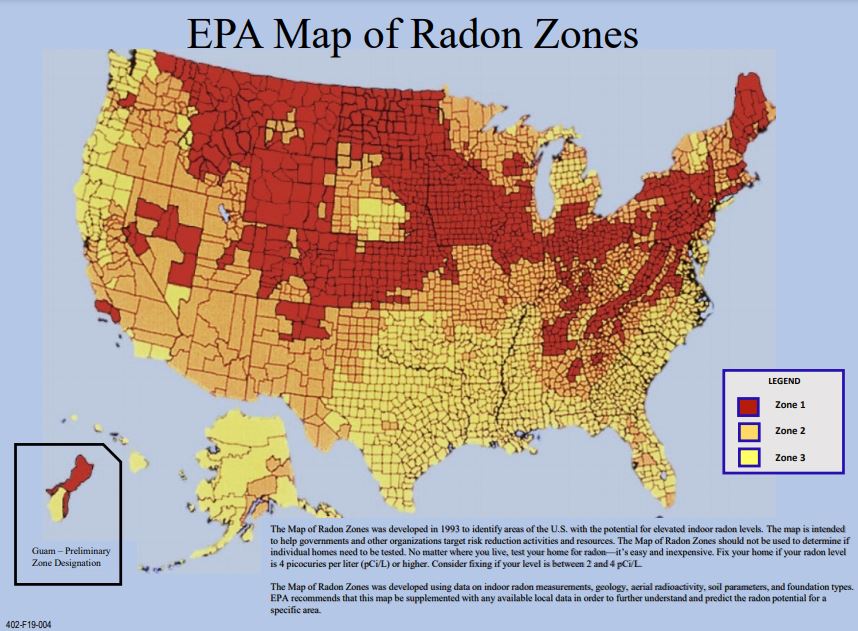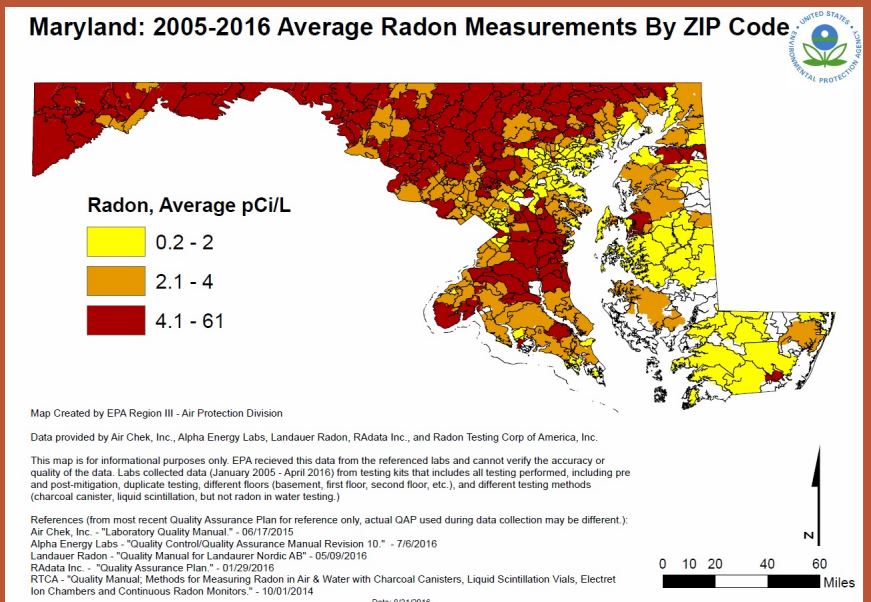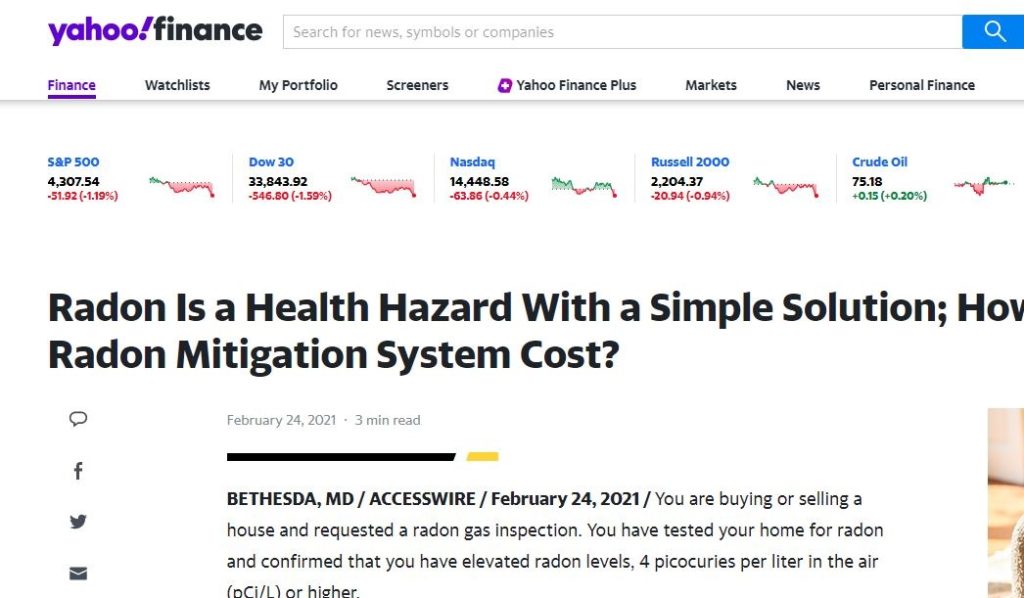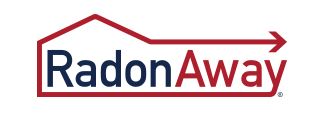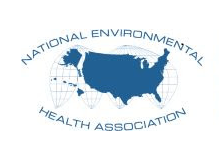What is Radon gas?
What is radon gas?
Radium is one of the decay products of uranium (U). It belongs to the decay chain of radon (Rn). Radon is the most prevalent radioactive gas because of its physical, chemical characteristics. Radon can be detected only by using special equipment because of its colorless, odorless, and tasteless properties.
The decay series of uranium produces three well known isotopes, radon (222Rn), thoron (220Rn), and actinon (219Rn), all of which have a half-life of 3.82 days. The presence of radon in the environment has been identified as a significant health risk for mankind. It is one of the leading contributors to ionizing radiation. Radon gas is a dominant source of background radiation dose to the environment (55%) and its concentration varies greatly from place to place and even from season to season.

It decays products are electrostatic by its nature. They bound to monodispersed and polydispersed aerosols. We can expect that about 80% of decay products will be attached to the aerosols in the surrounding air, depending on the aerosol concentration in the environment, the electrostatic charge of the radon progeny, and the humidity of the environment. Humans are inhaling this substance; which emits a high level of radiation. It bombards the sensitive tissues in the lung and damages the DNA cells.
Key points about Radon Gas:
• Radon gas comes from the radioactive decay of uranium 238(Uranium is a naturally occurring radioactive element that is present in nearly all rocks and soils; it has an average concentration in U.S. soils of about 2 pCi/g (3 ppm) (du Preez 1989; NCRP 1984a. Moreover, Uranium is present in the soil environment because of human activity, including the usage of U-bearing phosphorus fertilizers.)
• Radon gas comes from the immediate decay of radium 226. In areas where radium concentrations in rocks and soils are higher, the groundwater also typically has relatively higher radium content.
Radon is the leading cause of lung cancer among nonsmokers and the second leading cause of lung cancer in the general population (2). Radon in U.S. homes causes approximately 21,000 lung cancer deaths each year (3). This risk is largely preventable. Most people receive their greatest exposure to radon in their home dwellings. Radon concentrations in ground-contact apartments have been found to be similar to those in low-rise residential buildings located in the same area.(4) Be it at home, work or school, an individual’s exposure to radon gas combines over time to increase the risk of preventable lung cancer.
Health Hazards of Radon
In the 1950s, studies confirmed increased incidence of radon-induced lung cancer for workers in underground mines. In the 1980s, studies found that exposure to radon in homes can exceed exposures found for mine workers. This discovery resulted in the Indoor Radon Abatement Act (1988) that authorized U.S. state and federal activities to reduce citizen risk of lung cancer caused by indoor radon concentrations. Since 1988, the United States Environmental Protection Agency (USEPA) and the U.S. Surgeon General have recommended that all homes be tested for radon. Since the early 1990s, the U.S. Environmental Protection Agency (EPA) has advised all U.S. schools to test for radon and to reduce levels to below 4 pCi/L. In 1999, with publication of the BEIR VI2(2) study, the National Academy of Science confirmed that any exposure to radiation, including any concentration of radon, carries risk. In 2009, the World Health Organization’s “WHO Handbook on Indoor Radon” confirmed the association between indoor radon exposure and lung cancer, even at the relatively low radon concentrations found in residential buildings (1).
1 As point of reference, see the International Building Code (IBC) as published by the International Code Council. 2 World Health Organization, “WHO Handbook on Indoor Radon: A Public Health Perspective” 2009 3 National Academy of Sciences, “Biological Effects of Ionizing Radiation” (BEIR VI Report) 1999 4 Swedish Radiation Protection Authority, “Radon in Estonia Dwellings, Stockholm” 2003; and Valmari, T, Arvela, T and Reisbacka, “Radon in Finnish Apartment Buildings, Radiation Protection Dosimetry” 2012
Making Your Home Safe from Radon
It is important to note that radon and its decay products do not only pose radiological health risks to underground miners; they are also harmful to humans inside buildings and houses. Uranium forms the majority of the Earth’s crust. Soils and various building materials contains uranium as well. Radon gas can be present in confined places such as buildings and houses due to the fact that it originates from soils and building materials; as a result, it is easy for room occupants to inhale radon and its progeny from the air.
Indoor radon concentrations can be a significant problem due to the type of construction materials in the building and the soil composition surrounding the house. These factors play a significant role in the emanation and diffusion of radon gas (222Rn).
Basically, the radon gas that is emitted by the house will move from the soil to the house as a result of the air pressure difference between the house and the soil, thus from the soil to the house. There is a greater rate of exhalation of 222Rn in permeable soils, such as coarse sand and gravel, than in impermeable soils, such as clays.
In conclusion, there are several factors that determine the level of indoor radon (222Rn) concentration in a house. These factors are primarily the design, construction, and ventilation of the home.
What is Radon Safe level?
In accordance with the recommendations of the Environmental Protection Agency (EPA), radon gas concentrations should not exceed 4 pCi/L as a trigger for action. If radon levels exceed this value, homeowners are required to use different radon mitigation methods. However, as of now, the World Health Organization (WHO) has established 2.7 pCi/L as an action level for radon.

To further address the issue of radon exposure, many countries have established guidelines and regulations for radon testing and mitigation. For example, the World Health Organization (WHO) recommends that countries develop national radon programs that include radon awareness campaigns, radon testing and mapping, and the development of radon mitigation strategies.
In the United States, the EPA has established the Radon Action Plan, which outlines strategies for reducing radon exposure in homes, schools, and other buildings. The plan includes recommendations for radon testing, radon-resistant new construction, radon mitigation in existing homes, and radon education and awareness.
In Canada, the Canadian National Radon Proficiency Program (C-NRPP) provides certification for radon measurement and mitigation professionals, and maintains a database of certified professionals who can help homeowners with radon testing and mitigation. The Canadian government also provides resources for radon testing and mitigation, including information on radon-resistant new construction and the Radon Reduction Guide for Canadians.
Overall, radon exposure is a serious health concern that requires ongoing attention and action from individuals, governments, and organizations. By working together to raise awareness, develop effective mitigation strategies, and promote safe building practices, we can help to reduce the risk of radon exposure and protect the health of people around the world.
It is important to note that while radon exposure can be a serious health concern, it is also a preventable one. By taking simple steps to test for radon in homes and other buildings, and to mitigate high levels of radon gas when they are detected, we can help to reduce the risk of radon-related health problems.
In addition to testing and mitigation, there are also steps that individuals can take to reduce their overall exposure to radon. For example, increasing ventilation in homes and workplaces can help to dilute radon gas and reduce exposure levels. Similarly, sealing cracks and other openings in the foundation and walls of homes can help to prevent radon gas from entering the building in the first place.
Overall, radon exposure is a serious health concern that requires ongoing attention and action. By staying informed, taking proactive steps to test for and mitigate radon gas in homes and other buildings, and promoting awareness and education about the risks of radon exposure, we can help to protect the health of ourselves and our communities.
It is also important to note that while radon exposure is a serious health concern, it is not the only indoor air quality issue that can affect our health. Other pollutants, such as mold, carbon monoxide, and volatile organic compounds (VOCs) can also be harmful if present in high levels. Therefore, it is important to take a holistic approach to indoor air quality, including testing for and mitigating all types of indoor air pollutants.
Some additional steps that individuals can take to improve indoor air quality include:
- Regularly changing air filters in heating and cooling systems
- Using exhaust fans in bathrooms and kitchens to vent moisture and pollutants outside
- Avoiding the use of pesticides and other chemical cleaners that can release harmful VOCs into the air
- Keeping humidity levels between 30-50% to prevent mold growth
- Choosing low-emission products, such as paints and cleaning products, when possible
By taking a comprehensive approach to indoor air quality, we can help to create hea

